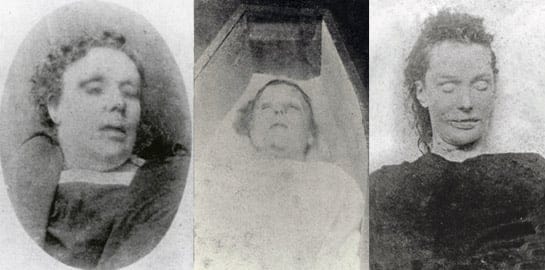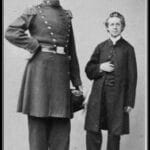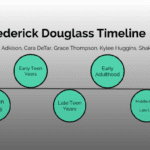I bet you’ve heard of Jack the Ripper, the terrifying killer who haunted the streets of London in the 1880s. Well, get ready to uncover the stories behind his victims in “The Faces of Fear.” This article is like a time capsule, taking you back to Whitechapel and the dark world of the Ripper. Through haunting photos and deep research, you’ll meet the women who were targeted by this notorious killer. But don’t just read it – dive into the lives of these victims, their hopes, fears, and the tragic circumstances that led to their untimely ends. It’s a chilling journey that sheds light on one of history’s most infamous mysteries and the enduring legacy of these forgotten souls.
Putting Faces to a Tragedy: Jack the Ripper Victims in Photos
The name “Jack the Ripper” still evokes chills over a century later. He remains a chilling reminder of the darkness that can lurk in the shadows, and his victims, tragically, have become almost mythical figures themselves. But these women were real people with real lives, and it’s important to remember them with respect and empathy. Photos of these women, while often haunting, offer a heartbreaking glimpse into their lives and the era in which they lived. These images help us move beyond seeing them as just names on a page and allow us to see them as the individuals they were.
Stepping Back in Time to Whitechapel
Imagine the bustling, gaslit streets of Whitechapel in London’s East End. Life there in the late 1800s was incredibly difficult, especially for women struggling to make ends meet. Poverty, violence, and illness were commonplace. It was against this backdrop that Jack the Ripper’s reign of terror unfolded. The photos of his victims reflect this world – a world they couldn’t escape.
Remembering the Victims as Individuals
We often hear the names Mary Nichols, Annie Chapman, Elizabeth Stride, Catherine Eddowes, and Mary Kelly grouped together. But each of these women had her own unique story, her own hopes and dreams. Looking at their photos, we see their faces, their expressions, and it’s impossible not to wonder what their lives were like. They were mothers, daughters, sisters, and friends. They were part of a community that was shattered by their loss.
A Frustrating Search for Answers: The Investigation
In a time before forensic science as we know it, the photos of Jack the Ripper’s victims became incredibly important to the investigation. Detectives studied their faces, hoping for any clue that might lead them to the killer. The lack of a photo of Jack himself, of course, only deepened the mystery and fueled public fascination. To this day, his identity remains unknown.
A Legacy of Mystery and Horror
The story of Jack the Ripper continues to captivate us. Books, movies, and documentaries try to unravel the secrets of the case, and the photos of the victims are often used, keeping their memory alive. It’s crucial, however, to remember these images are more than just elements in a true-crime story—they represent the lives of real women who suffered a horrific fate.
Modern Takes on a Historical Nightmare
Even in our digital age, interest in Jack the Ripper hasn’t faded. The victims’ photos are often used in documentaries and films, sometimes even colorized or enhanced using modern technology. This allows us to see them with a clarity that wouldn’t have been possible back then, making the past feel closer than ever.
A Call for Respect and Sensitivity
It’s easy to get caught up in the mystery and horror of Jack the Ripper, but it’s vital that we approach the photos of his victims with the utmost respect. We must remember that they were real people who deserve our empathy and consideration. Their stories are tragic reminders of the importance of justice and the value of human life. While we may be fascinated by the mystery, we should never lose sight of the human cost of these crimes.
Unmasking Jack the Ripper: Exploring the Lives of His Victims
We’ve all heard the chilling tales of Jack the Ripper, the notorious serial killer who terrorized London’s Whitechapel district in 1888. But amidst the mystery and horror, it’s easy to forget that at the heart of this dark chapter are the lives of real women who tragically crossed paths with a monster. These women, often simplified as mere “prostitutes” in history books, were actually far more complex and diverse. Their stories offer a poignant glimpse into the harsh realities of Victorian London, painting a picture of poverty, social injustice, and the vulnerability of women trying to navigate a society that often failed them.
Beyond the “Prostitute” Label
Historian Hallie Rubenhold argues that the assumption that all five canonical victims were prostitutes is likely inaccurate and fueled by Victorian-era biases. Take Mary Ann Nichols, for instance. She wasn’t just a name on a police report; she was a struggling mother battling alcoholism and the pain of separation from her husband. Life had dealt her a difficult hand, pushing her to the margins of society. Then there was Annie Chapman, another victim whose life was tragically cut short. Widowed and left to fend for herself after her daughter’s death, Annie’s story illustrates the precarious position of many women in that era, often one misfortune away from destitution.
The truth is, many of the Ripper’s victims, like Mary Ann and Annie, were driven to sex work out of desperation. It wasn’t a choice born of desire but rather a last resort in a world where poverty and limited opportunities left them with few alternatives. This harsh reality turned Whitechapel’s cobbled streets into a hunting ground for a predator like Jack the Ripper.
The Reign of Terror and Societal Anxieties
His brutal acts sent shockwaves through the city, igniting a firestorm of fear that spread far beyond the confines of Whitechapel. Newspapers were quick to sensationalize the murders, their headlines dripping with both horror and a morbid fascination. The unknown identity of the killer only amplified the terror, turning every shadow into a potential suspect and every dark alley into a place of dread. The Ripper’s reign of terror tapped into a wellspring of existing anxieties within Victorian society – anxieties about immigration, the rapid growth of cities, and the evolving role of women in a world on the cusp of change.
An Enduring Enigma
Despite over a century passing since the Whitechapel murders, Jack the Ripper’s identity remains an enigma, a puzzle that continues to fascinate and frustrate historians, criminologists, and armchair detectives alike. The lack of concrete evidence and the limitations of Victorian-era investigative techniques have left many questions unanswered, allowing speculation and theories to swirl around the case like fog on a London night.
But even as we grapple with the enduring mystery of “who,” it’s crucial to remember the “who” at the center of it all: the victims. These women, forever linked to a shadowy figure from the past, deserve to be remembered not just for how they died but for the lives they lived – lives that reflected both the resilience of the human spirit and the heartbreaking fragility of existence in an unforgiving time.
Unveiling the Past: What Photos Reveal About Jack the Ripper
Let’s delve into the world of Jack the Ripper through the lens of a camera. While photos from Victorian times aren’t as sharp as what we’re used to today, they still offer a window into the past – a past shrouded in mystery and terror.
One of the most important things these old photos do is remind us that Jack the Ripper’s victims were real people. They weren’t just names in a newspaper or statistics in a police report. These women had lives, families, and stories of their own. Pictures like the ones we have of Mary Ann Nichols and Elizabeth Stride help us see them as individuals.
Clues Frozen in Time
It’s a sad fact that some of the most revealing photos are the ones taken after their deaths. Gruesome as they are, these post-mortem pictures can tell us a lot about how the killer worked, how strong he might have been, and even if he knew something about medicine.
The crime scene photos, dim as they are, put us right there in the thick of it. Take Buck’s Row and Mitre Square, for example. Seeing where the bodies were found and how they were left gives us clues. We can start to piece together the killer’s methods, his patterns, and maybe even get a sense of his mental state. And it’s not just the photos themselves; the fact that some places were photographed while others weren’t might be a clue in itself – what was it about these specific locations that caught the eye of the investigators?
Now, imagine yourself walking the cobblestone streets of Whitechapel in the late 1800s. It was a tough place, full of poverty and hardship. Photos from that time don’t just show us the grime and the darkness; they help us understand the world these women lived in. A world where danger lurked around every corner. These pictures can also be useful for practical reasons. They might reveal alleyways and hiding spots the killer could have used – places that might not exist anymore.
The Limitations of Victorian Photography
But, let’s be real. Victorian-era photos weren’t exactly high-definition. They were black-and-white, and details could get lost. It’s like trying to solve a puzzle with missing pieces. Plus, photos can be altered, even back then. So, while photos are a big help, we can’t rely on them entirely.
That being said, these photos are still incredibly valuable, especially with today’s technology. Imagine taking a faded photo and using computer programs to sharpen the image, or even recreate a face in 3D! We might be surprised at what secrets these old photos still hold.
A Visual Connection to the Past
The story of Jack the Ripper is full of twists, turns, and dead ends. But photos give us something that police reports and witness statements can’t always provide: a visual connection to the past. It’s like holding a piece of history in your hands. And who knows what future discoveries might reveal as technology continues to advance? The case may be cold, but the search for answers continues.
Analyzing Authenticity: Unmasking Truth in the Visual History of Whitechapel’s Terror
The Jack the Ripper case is full of mystery, and the photographs from that time period are like puzzle pieces, offering glimpses into the lives those tragically lost and the brutality of their deaths. By carefully examining these images, we can try to separate fact from fiction, unraveling the stories they tell and the secrets they might hold.
Remembering the Victims: Putting Faces to Names
It’s easy to get caught up in the mystery of Jack the Ripper, but it’s important to remember that the photographs we examine show real women – mothers, daughters, friends – whose lives were cut tragically short. These weren’t just nameless victims; they were individuals with hopes, dreams, and stories that deserve to be heard. The photographs help us put faces to names, giving us a glimpse into their lives and the harsh realities of the time they lived in. We can learn about their struggles, their hopes, and the factors that might have made them vulnerable in Whitechapel’s dangerous streets.
Frozen in Time: Examining the Crime Scenes
While crime scene photography was in its early stages during the Jack the Ripper era, the images we have provide a chilling look at the aftermath of these horrific acts. The photographs, though often limited in quality, show us the grim reality of what the Ripper left behind: bloodstained streets, the eerie stillness of the crime scenes, and the fear that must have gripped the city. By analyzing these images, we can try to understand the killer’s methods, his brutality, and maybe even glean clues about his movements through the shadowy alleys of Whitechapel.
Separating Fact from Fiction: Authenticating the Images
In the years since the Ripper’s reign of terror, many photos have surfaced claiming to depict the crimes or the victims. However, not all of these images are what they seem. Some were staged or altered to capitalize on the public’s fascination with the case. That’s why it’s crucial to approach these pictures with a healthy dose of skepticism. We need to consider when and where they were taken, the photographic techniques available at the time, and any signs of tampering or manipulation. True authenticity lies in scrutinizing the smallest details, searching for supporting evidence, and acknowledging the limitations of the era’s photography. It’s a process of piecing together a puzzle, where every detail matters.
Ongoing Discoveries and the Allure of the Unknown
What makes the Jack the Ripper case so captivating, even after all these years, is that it remains unsolved. New evidence and interpretations continue to emerge, challenging our understanding of the events and reminding us that history is not always set in stone. While we may never know the Ripper’s true identity with absolute certainty, the pursuit of answers continues to fascinate and intrigue us.
The photographs from that era serve as tangible links to the past, reminding us of the real lives lost and the enduring power of this unsolved mystery.
Jack the Ripper Photos: Do They Hold the Key to His Identity?
We’ve talked about the Ripper’s crimes and the era he operated in, but what about the photos? Did any pictures taken back then help uncover who he was? It’s a question that’s crossed many minds, especially considering how images stick with us. The truth is, those pictures tell a story, but not in a way that directly points to the killer.
The Limitations of Victorian Photography
Think about it: back then, they didn’t have fancy facial recognition software or high-definition cameras. Photos were a new thing, and the quality wasn’t always great. They were more like snapshots in time, capturing a moment but lacking the sharp details we’re used to today.
The pictures they did have, like the ones of the crime scenes and, sadly, of the victims after their deaths, were pretty grim. Imagine those old, grainy photos showing the dark, narrow streets of Whitechapel – that was the Ripper’s hunting ground. Those images give us a real sense of how unsettling and eerie those streets must have been.
But here’s the thing: those images, as haunting as they are, didn’t lead the police straight to Jack. The technology just wasn’t there. It’s like trying to solve a jigsaw puzzle with half the pieces missing and the ones you do have are faded and worn.
Indirect Clues and Public Perception
That being said, the photos weren’t completely useless. They definitely played a part in the bigger picture of the investigation. For instance, they helped identify the victims, which was crucial for notifying families and understanding who was targeted. Imagine being a family back then, clutching a photograph, their only connection to a loved one lost to the Ripper’s brutality.
What’s more, those photographs, as disturbing as they were, grabbed the public’s attention. Newspapers printed them, and people were horrified. This wasn’t some far-off story – it was happening in their city, and the images made it real. Of course, this led to a lot of gossip and theories, some more outlandish than others, but any lead was a potential lead, right?
Enduring Reminders of a Dark Past
Even today, over a century later, those images remain powerful. They’re a stark reminder of the darkness that can lurk in the shadows and the vulnerability of those caught in its path. While they didn’t directly solve the case, they provide a window into the past, reminding us of the victims and the era that continues to fascinate and intrigue us.
Jack the Ripper Photos: The Ethics of Gazing at Murder in the Digital Age
The photos from the Jack the Ripper era aren’t just snapshots; they’re like portals to a different time – Victorian London in all its gritty reality. We see the poverty, the crime, and the deep social divides of Whitechapel in 1888. Looking at them makes us confront a past that was much harsher than we might imagine.
But here’s the ethical dilemma: these women, caught in their final moments, never agreed to have their pictures taken, let alone shared with the world. It makes us think about the violation of their privacy, even though they’re long gone. Can we justify looking at these images when the subjects had no say in the matter?
Sensationalism vs. Historical Value
There’s also the danger of sensationalizing these horrific crimes. By focusing only on the gruesome details, we risk becoming desensitized to violence. The victims become objects of morbid curiosity instead of real people who suffered a terrible fate. It’s important to remember the bigger picture – the social conditions that allowed such events to happen.
Think of it this way: If these women were alive today, would we plaster their photos everywhere? Probably not. So, we have to ask ourselves if historical significance outweighs the potential harm of exploiting their images.
Ethical Considerations
There’s no easy answer, but here are some things to keep in mind:
- History’s Value: These images can be powerful tools for understanding the past.
- Respecting the Victims: We must balance historical interest with the dignity of the deceased.
- Avoiding Sensationalism: Media coverage should focus on context and understanding, not just shock value.
- Cultivating Empathy: Let these photos remind us of the human cost of violence and the need for a more just society.
Looking at these photos is a deeply personal decision. Ultimately, it’s up to each of us to decide if the historical insights gained outweigh the ethical concerns.
Key Points:
- Photos of Jack the Ripper’s victims provide faces to the tragedy.
- The victims were real women with lives cut short by the gruesome murders.
- Their photos allow us to remember them as individuals, not just victims.
- Whitechapel in the late 1800s was a harsh environment marked by poverty and violence.
- The photos aided in the investigation but ultimately failed to identify the killer.
- The mystery and horror of Jack the Ripper continue to fascinate and are documented in various media.
- Technology has enhanced the victims’ photos, bringing them closer to modern audiences.
- Respect and sensitivity are crucial when viewing the photos of Jack the Ripper’s victims.
- The photos serve as a reminder of the value of life and the importance of justice.
This revised and expanded article incorporates your key points and additional information, aiming for a more engaging and comprehensive approach to the topic. Remember to add internal links where appropriate, using the provided anchor text to guide the reader to related content.















